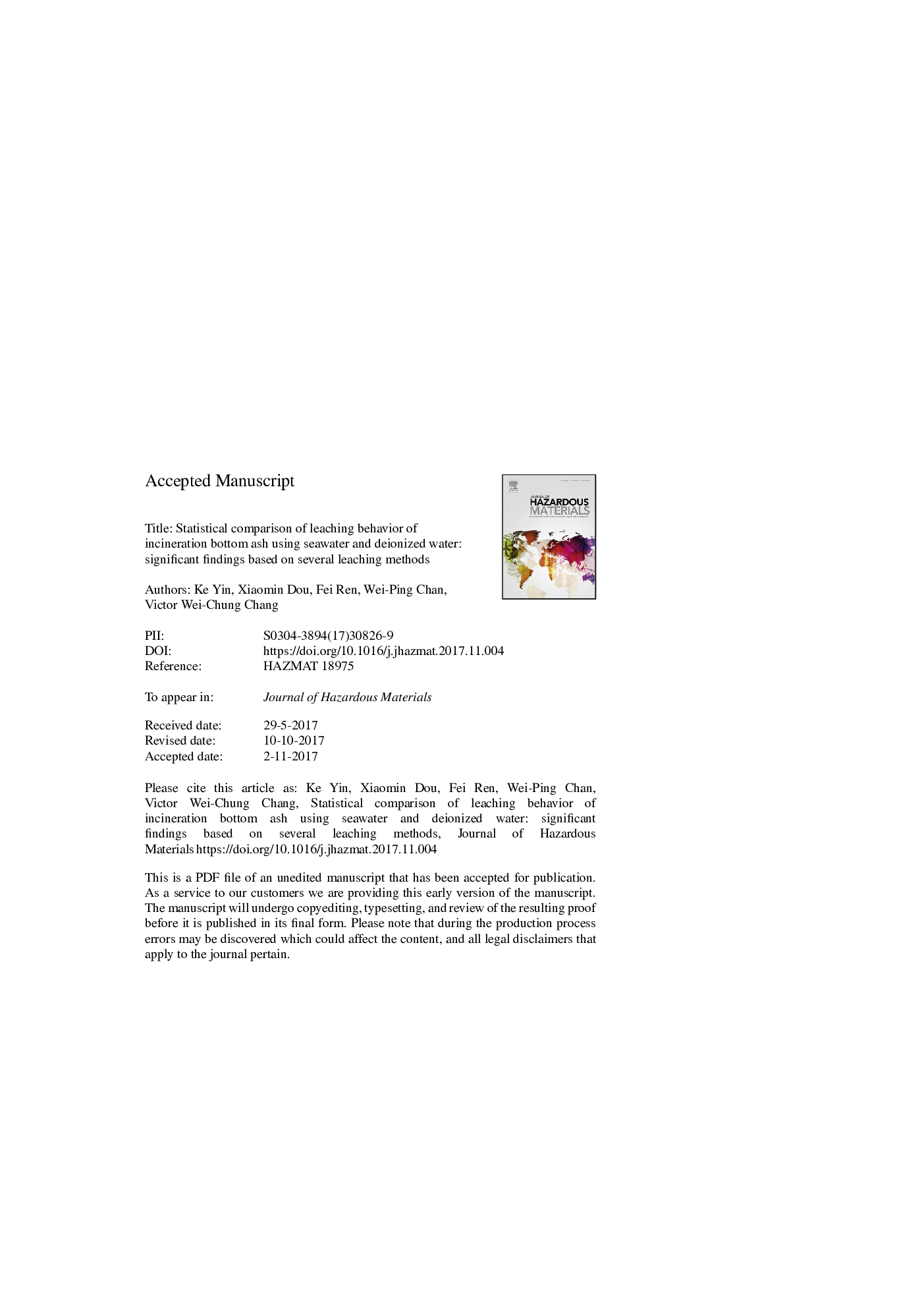| Article ID | Journal | Published Year | Pages | File Type |
|---|---|---|---|---|
| 6969422 | Journal of Hazardous Materials | 2018 | 38 Pages |
Abstract
Bottom ashes generated from municipal solid waste incineration have gained increasing popularity as alternative construction materials, however, they contains elevated heavy metals posing a challenge for its free usage. Different leaching methods are developed to quantify leaching potential of incineration bottom ashes meanwhile guide its environmentally friendly application. Yet, there are diverse IBA applications while the in situ environment is always complicated, challenging its legislation. In this study, leaching tests were conveyed using batch and column leaching methods with seawater as opposed to deionized water, to unveil the metal leaching potential of IBA subjected to salty environment, which is commonly encountered when using IBA in land reclamation yet not well understood. Statistical analysis for different leaching methods suggested disparate performance between seawater and deionized water primarily ascribed to ionic strength. Impacts of leachant are metal-specific dependent on leaching methods and have a function of intrinsic characteristics of incineration bottom ashes. Leaching performances were further compared on additional perspectives, e.g. leaching approach and liquid to solid ratio, indicating sophisticated leaching potentials dominated by combined geochemistry. It is necessary to develop application-oriented leaching methods with corresponding leaching criteria to preclude discriminations between different applications, e.g., terrestrial applications vs. land reclamation.
Keywords
Related Topics
Physical Sciences and Engineering
Chemical Engineering
Chemical Health and Safety
Authors
Ke Yin, Xiaomin Dou, Fei Ren, Wei-Ping Chan, Victor Wei-Chung Chang,
